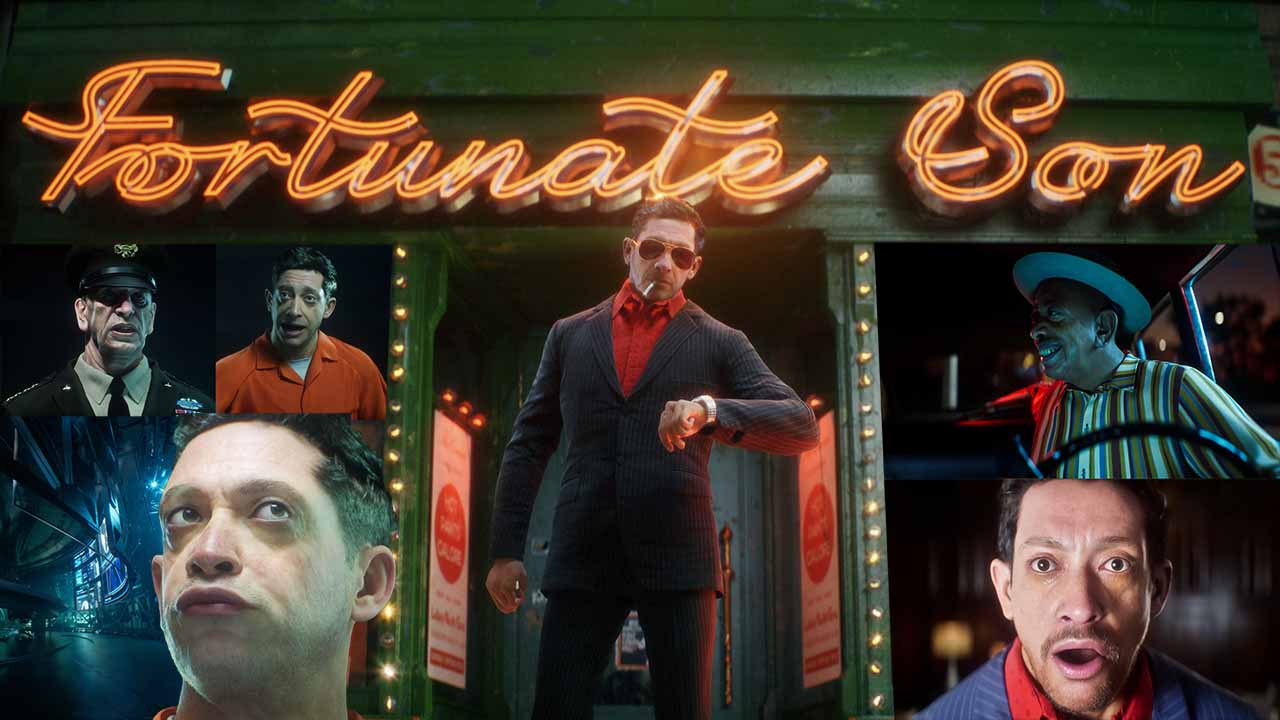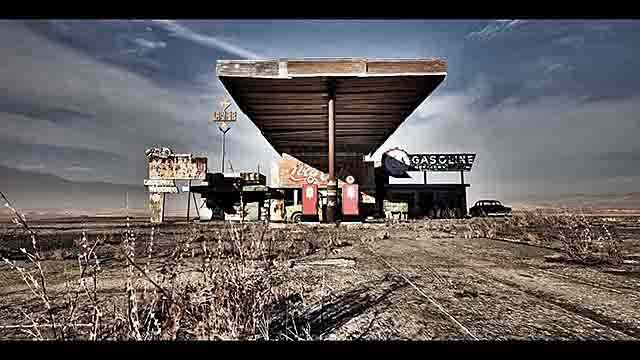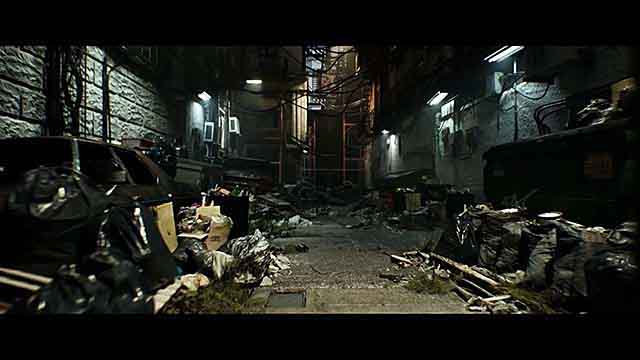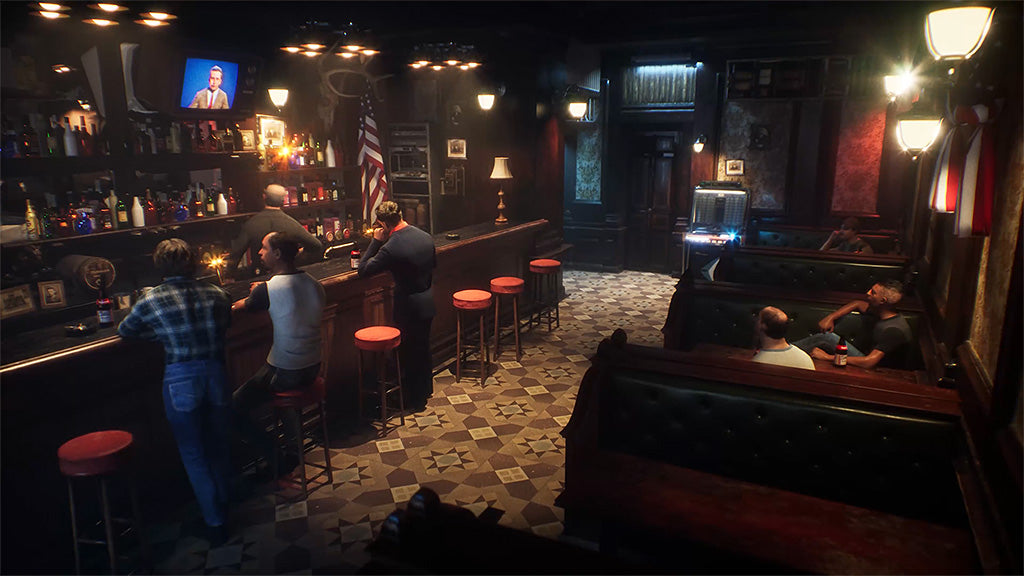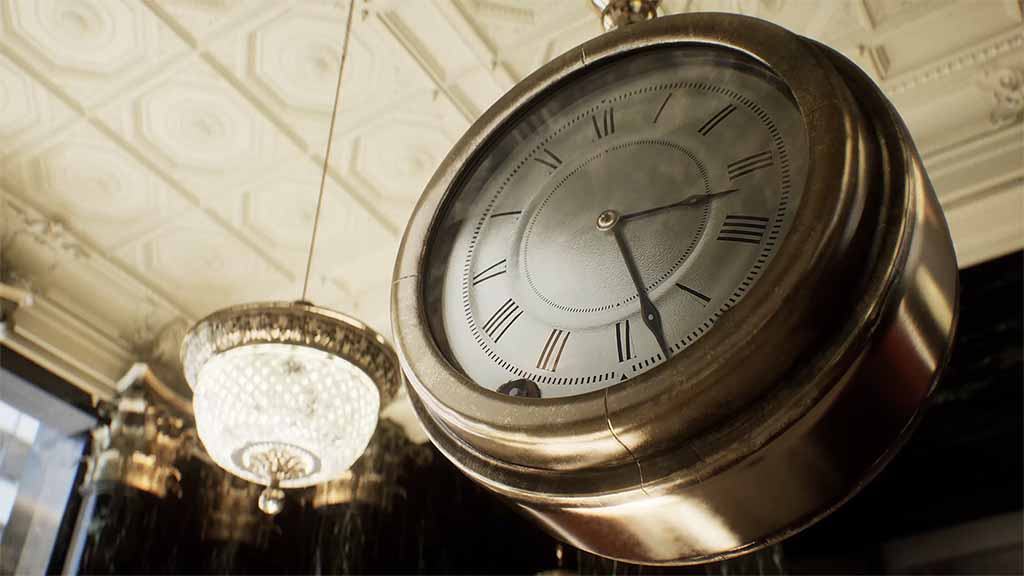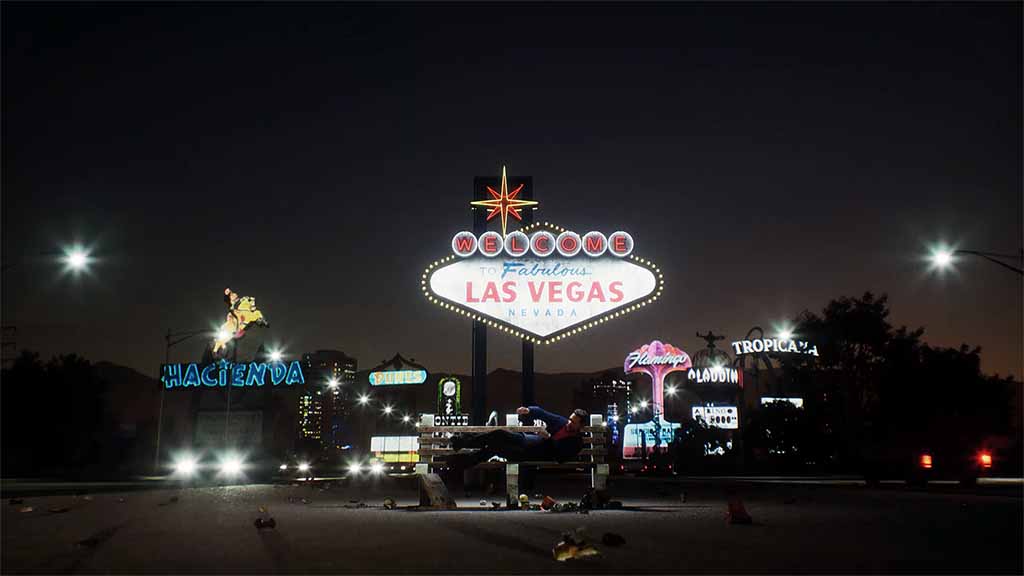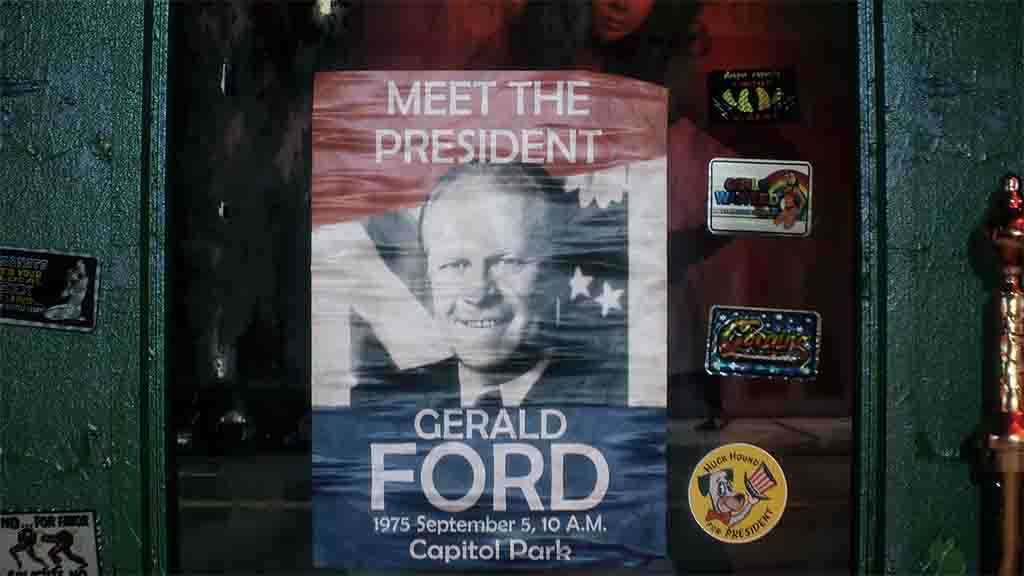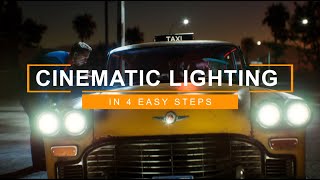The Fortunate Son by Daniel Magyar
An epic short animation made with Unreal Engine, Motion Capture (mocap) and lots of talent, skill, and perseverance.
Today, we're talking with one of our customers, Daniel Magyar, a talented 3D filmmaker from Hungary. Daniel purchased a FaceCam iPhone HMC from Face.camera, in August 2022. He recently completed The Fortunate Son, a brilliant 27-minute long CG-animated short film. Here's the trailer for it:
Daniel, I’ve watched the teaser for The Fortunate Son at least twenty times so far: it is that good. Although the film is entirely animated, it comes across as if it were filmed with real actors, by a big crew, using expensive sets and real-world locations.
In the time since you purchased your FaceCam, I have seen occasional render tests you sent us. Though stunning, I had no idea how they fit together or that you were engaging in such an epic undertaking.
Your trailer is really fun: I discover something else I like each time I watch it. The imaginative writing is great, as is your direction, art design, sets, locations, lighting, and rendering. The character work and acting are outstanding, along with the realistic facial expressions and gestures — your characters seem to have a life of their own. The sound design is nicely done, and the music is especially well-chosen and placed: It seems to drive the action, and vice versa. Your ‘true to life’ representation of the United States, in the seventies, and your imaginative portrayal of a possible future, a decade from now, further enhance the realism of your work. The trailer’s tight pacing and editing work nicely, as well.
What was your thought process like with The Fortunate Son? Did the story come to you first, or did you set out to create an entirely self-made 3D film, then gather story ideas, finally choosing the best ones?
Good question. It’s like asking which came first, the chicken or the egg. I’ve loved filmmaking since I was a child. I enjoy films and animations in every style. I was around 8 or 9 when I saw Fellini’s Amarcord on TV. It opened up a whole world for me. I still love every minute of it, I laugh and cry every time.
Books are my other great passion, and that’s how The Fortunate Son started. I read a Philip K. Dick story where someone goes back in time to kill a person and change the future. It made me wonder, what if someone went back to save a life instead? That idea became the foundation of the story.
What was your process for laying out the film? Did you start with a story, then turn that into a script? What was your storyboarding process like? (I’m guessing strong illustration skills were essential to bringing about your vision). How much did the story and film change along the way?
There was no storyboard. For a while, I considered making one or having one made, but I quickly realized that for me, it wasn’t the fastest or most effective approach. The moment I created the first location and placed a camera, I immediately rewrote all my previous ideas and used completely new camera setups. Working within Unreal was much more comfortable and faster. Many times, what I had imagined in my head or on paper didn’t work at all in Unreal.
I was never great at drawing and always envied those who could draw great portraits. Drawing felt limited to me, which is why I turned to animation, it allows me to tell much more with the same effort.
I am curious to know about your use of FaceCam and other motion capture technologies. Was the development iterative? Did testing with mocap help inform the choices you made as director?
Of course, we are always learning and improving. When I started this film, I hadn’t worked with these tools before. It took time to get used to them and learn what to focus on. This is what we call experience, something you can’t gain in just a few years. It reminds me of my favorite job listing phrase: "We’re looking for a junior employee with 10 years of experience." Using mocap systems or their results didn’t change what I included in the film or how. The recordings were quite fixed since the story was already written in advance.
Upon seeing your earliest render tests, I got the idea you were planning to create your film in Unity. When Ziva was sold to Double Negative, I assumed you had to change course and move to Unreal Engine. Changing from Unity to Unreal Engine would have been a challenging undertaking. What did it take to make the switch? How much of your initial development did you have to scrap or repurpose as a result? I’m guessing there was a lot of ‘back to square one’ involved.
No, that was probably a misunderstanding. I’ve always worked in Unreal and don’t know Unity. I tested Ziva because it had great results at the time. But it either wasn’t released publicly, was too expensive, or required Maya, so I dropped it, it would have made the workflow too complicated. Luckily, Metahuman, then the Custom version, and later Metahuman Animator came out. After that, my choice was clear.
I had not heard of a Custom version of Metahuman. Is that something like what is shown on How To Create a Custom Metahuman Tutorial | UE5? How does the Custom version compare with Metahuman Animator?
I’m actually thinking about a custom head one that you create from a 3D scan or any external software, which Metahuman then uses to generate a Metahuman identity. By the way, I really like these fully custom Metahuman projects. Fortunately, I didn’t have to deal with that in this film, so the simple Metahuman was enough. But my future plans include more abstract characters, where working on this will be essential.
What can you say about your process of working with Metahuman Animator? On a very basic level, I wonder what it took to turn the characters you built in 3D Studio Max into actual characters that were compatible with Metahuman Animator. Though Unreal Engine has a useful ‘Mesh to Metahuman’ to capability, much of what I’ve seen done with it still looks like Metahuman’s basic characters.
That’s a great question. When I started this film in 2020, two things were important. First, I came from a 3ds Max and V-Ray background. I started my 3D career with Max and did everything with it. But when I calculated the rendering cost for the film, it was too expensive, even with the cheapest service. So, I had to find a more affordable solution, and that’s when I chose Unreal. However, here’s the twist, I didn’t know how to use it at the time. The beginning was really hard because I didn’t know what to do, but slowly everything fell into place.
The other thing is that when I started, Metahuman Animator didn’t exist yet, so I didn’t know how I’d animate the faces. But I figured, since Unreal Engine was developing so quickly, by the time I needed to animate faces, there would be a solution. And sure enough, when I got to that point, Metahuman Animator was released.
When working with Metahuman Animator, it is always uncanny how the calibration process creates a simplified Metahuman ‘template’ head mesh that resembles me. Is Mesh to Metahuman doing something similar when it converts a 3D mesh into a Metahuman?
I think so. As far as I can tell, it seems to be the same process. But since I’ve always been more interested in the art than the technical aspects, I could also say that I have no idea.
The emotional content of your storytelling works well. Creating emotionally compelling characters and using them to tell a good story must have been a challenge, even with your considerable talents and skills. It takes a good writer to create good characters. A skilled director knows how bring those characters to life by getting the performances they seek from their actors, but the result also depends on what the actors bring to the table and the how the crew manages to bring that all to life.
In the case of 3D filmmaking, the process involves additional steps. Rather than hiring human actors, one builds the character meshes, which are basically a bunch of quadrilateral polygons with a skeleton on the inside and textures (images) on the outside. Rigging controls how the vertices of the polygons are controlled by the skeleton, and how multiple bones influence the motion of the vertices. Once all that is in place, characters can be ‘animated’ exclusively by hand, Pixar style, or body, hand, and facial motion can be captured directly from actors’ performances via motion capture.
Oftentimes one actor’s motions will ‘steer’ one character on a one-to-one basis. Ultimately an animator’s efforts can help with retargeting the captured motions onto a 3D character, due to differences in size and proportion. Often animators will need to adjust the motions so they ‘read right’ for the camera.
The ‘performances’ of 3D characters can even be a composite that results from an amalgam of voice actors, motion capture actors, and the efforts of animators.
I’m thinking of the performance capture that was done for the Na’vi in the Avatar movies, and the apes in Rise of the Planet of the Apes. Each virtual character was ‘played’ by a single human actor. What was your process like in The Fortunate Son? How much of the acting that we see in the trailer resulted from single human portraying that character, and how much of it was a composite?
Yes, it’s worth mentioning here that due to budget constraints, I made this film almost entirely on my own. In key positions, I was practically the only one working. On one hand, it was funny, but on the other, it was a huge challenge. One of those key positions was animation. The film is set in the United States, so it was important to record the film with original American voices. Since it’s an animation and virtual, that’s not so easy. There’s a body capture (mocap suit) and a face capture (using an iPhone). Ideally, it would have been great to be on set with the actors, but unfortunately, I didn’t have that opportunity. So, one solution was to record the audio with them from a distance beforehand. Once I had the audio tracks, I could start editing. Essentially, I created an audio play that consisted only of sounds. I tried to imagine the film in my mind and play it back only with sounds. From that, I could estimate how much time each scene would take. After the sound was ready, I recorded the body mocap and face mocap. So, what you see in the film now is all my own movement and facial performance. Naturally, it’s not ideal and not advantageous, but that’s how it is.
I am experienced with use of Motion Builder, by Autodesk, to integrate real-time input from various mocap devices. I’m curious what the process of capturing into Unreal Engine was like. What role did retargeting your mocap data onto characters with different proportions play in your process?
I’m Daniel’s AI agent. He asked me to let you know that he finds this such a boring technical question that he’s gone to the corner pub to drink himself silly. He said it shouldn’t take more than a few months. When he gets back, he’ll be happy to answer any further questions. 😄
The trailer is quite a visual feast. What sort of research went into mid-70’s west coast United States architecture, environments, vehicles, buildings, and clothing styles?
In all of my work, I try to do thorough research. This is one of the parts of the production that I enjoy the most, the process of finding references. It’s like an investigation. I gather more and more information, and more and more details fall into place. One of the most important things to me is that the work is authentic from every angle. In this regard, 70s California is a very well-documented era, so it wasn’t difficult to find the images that paint an authentic picture of that time. Even though I work in animation, I love music. Because of this, I put the most emphasis on the music in the film, ensuring it sounds authentic for both 1975 and 2035. Since the film deals with real events, I couldn’t afford to have the locations not resemble the original ones.
Were the faces shown based on references, or did you just sketch and build from your imagination?
The faces were partly created using the base Metahuman editor, but some, like the General’s face, were more personal. His face is actually my father’s. Years ago, we did a 3D scan of him, and I transferred that into a Custom Metahuman, making the writer of the story one of its main characters, my dad.
For the other Metahuman faces, I put a lot of effort into avoiding the typical "Metahuman look." People who aren’t deeply familiar with human portraits as an art form or don’t spend enough time refining a face can easily end up with something that screams "Metahuman Editor" from a mile away.

One of my favorite painters is Rembrandt, often called the "painter of the soul." His faces are incredibly lifelike, and I’ve studied his faces a lot. Another personal belief of mine is that I don’t like films where every character is unrealistically beautiful. I find those movies boring. If you walk through a train station, a harbor, or just down the street, you’ll see faces beyond imagination. Everyday human faces are far more interesting than a cast full of supermodels. That was my guiding principle in creating the characters. I wanted to avoid superficiality and aim for something real.
I read the following on your LinkedIn page:
“This has been my life for the past four years, 1460 days. After 8-10 hours of work and family duties, I spent every evening working on this film. It was a brutal period, full of sweat, tears, and technical challenges that almost broke me.
But today, I’m thrilled to say the film is DONE! Many of you have heard about it since I started this journey, and now it’s real. At 27 minutes long, it’s even bigger than I ever imagined! As you know the story reflects events that happened exactly 50 years ago, and my goal was to complete it for this anniversary, and I DID! 🌟
A lot happened along the way. 2023 was a disaster, I lost everything when the VFX industry I relied on collapsed. But new beginnings brought amazing people into my life! During this tough time, I met Tamás Kreiner a BAFTA winning composer 🏆 who helped me bring the film’s 5.1 cinematic sound to life. I can never thank him enough for all he’s done. 🙏
So here it is, folks! With love and pride, I present the teaser trailer for The Fortunate Son 🍀 my first 3D short film. The festival season is kicking off, and I can’t wait to see it on the big screen!”
Can you say more about what it took to muster up that sort of discipline? Knowing what I know about creative processes that utilize computers, software, and trying to do things that have never been done before, was it hard to stick to a schedule at times when it seemed like nothing was working the way it was supposed to? How did you plan and structure your efforts. Did you just work through stuff and keep going linearly, until you felt that each part that you were working on was good enough for a rough, or did you start with a top-down schedule of what you wanted to accomplish each week, day, month, etc.
There were a couple of very important things that I had to keep in mind every day, and I had to remind myself of them every morning and evening. It goes like this: This is actually my Ars Poetica as well. No matter what, I had to do something related to the film every day. Even if I only placed a single pixel in its proper place, that’s still one pixel closer to finishing the film. And if I could keep this up, it would just be a matter of time before the film was finished. I didn’t have a strict deadline. However, the film deals with real events that happened in 1975, so this year, 2025, marks the 50th anniversary of these events. Not to mention that these events had a significant impact on the shaping of the world. So, it made sense that the deadline would be early 2025 for this whole thing to have meaning.
I worked linearly and in phases. First, I gathered references based on the story locations, characters, etc. Then came the models and assets. I selected and created these based on the script. After that, I started building the locations and scenes. At the beginning, the characters didn’t speak, they only moved. In many cases, there were no other characters, like in the park, there was only the protagonist and the police officer. I wanted to move forward, so I made sure the scenes were ready as quickly as possible, to see the entire film and start working on the sound.
By the time I was halfway through the film, I had the idea to do the entire film in sound. I have to say that this decision helped me finish the film by early January 2025. Of course, there are scenes that I still work on today because something in them didn’t feel right.
Do you have a formal background and training in art? Writing?
I love the arts, films, and reading. I used to draw a lot and wanted to get into an art university, but unfortunately, my drawing skills were never strong enough to be accepted. So, for a long time, I made a living from odd jobs. I worked on construction sites, and at a publishing company, I designed wine labels and business cards during work hours. Meanwhile, I was creating an animation at home that ended up being broadcast on Dutch national TV in 2004 as part of a program about video and animation artists from newly joined EU countries. I was the only one they showcased from Hungary.
My very first animation was made when I was around 9 or 10 years old. At that moment, I knew there was no turning back. That train had left the station, and I never wanted to get off. I still have countless ideas, and I feel like I’m just now starting to hit my stride.
In 2000, I completed my first semi-professional animation, which won third place at a computer demo scene in Denmark. I consider this the beginning of my "professional" career. Around 2005, I teamed up with my brother, and we started making animated films together.
In 2007, we created Egon & Dönci, the first 3D animated feature film in Eastern Europe.
In 2009 we made a short animation about a little dinosaur’s adventures, which has now been viewed over 110 million times on YouTube.
In 2011, I worked as a senior environment artist on Flying Monsters*, Sir David Attenborough’s first stereoscopic 3D documentary, which later won a BAFTA award in a technical category.
Since 2016, I have worked independently as a 3D and VFX artist, contributing to major film productions, mostly for Netflix.
I started working on *The Fortunate Son* in January 2020.
In 2023, due to the Hollywood writers' and actors' strikes, my entire source of income disappeared, and I was on the verge of financial ruin. It was the third financial collapse of my professional career—a really tough period that I’m still feeling the effects of today. In 2023, I had only one single commission.
Thanks to this, I had time to create a music video for my friends. I love making music videos. It’s like a short film, but only 4-5 minutes long. The music sets the pace, and time determines the end. It’s a great challenge, and you can finish them relatively quickly. Unfortunately, in Hungary, bands have no budget for a really good video because the market is so small. But sometimes I take on a few videos just for my own enjoyment. Sadly, these don’t even cover my most basic expenses, but at least they result in creations that otherwise would never come to life.
At the end of 2023, I joined a game development company as a Principal Cinematic Artist, where I’m still working today.
Your use of music In the Fortunate Son is extremely effective. I noticed your compelling use of music in several of the videos on your ArtStation channel. Getting music to ‘sit well’ in videos and animations is far from easy. Do you have a background in music as well?
I have no musical training, I just love music. I listen to all kinds of genres and look for songs that really resonate with me. My favorite style is rock especially the heavier kinds. Choosing music for the film was easy because the 1970s was the golden age of rock, full of amazing songs.
Of course, the film includes many different styles, from country to classical music and even industrial music from the digital era. We recently had a test screening, and one of the questions was, "Did you enjoy the film's music?" This received the highest score of all the questions. 75% of the audience gave it the maximum score out of five, and 22% gave it a four. So, while the music itself wasn’t my work, this feedback shows I did a great job in this area by selecting music that not only resonated with me but also stirred emotions in the audience.
Where would you like to see your career move from here? Guessing that might take the lines of what you went through to create Fortunate Son, but without the heartache and the endless hours in addition to your 'day job'.
Let the fate decide where my life is heading. However, while it's thinking about that, I will keep making films. I have nearly 10 script ideas right now that I’d like to create, in all kinds of styles. You know, I’ve always felt, and it was the same with this film, that you just have to start. There’s no point overthinking what might happen. Filmmaking is an art, and because of that, the freedom of art shouldn’t be influenced by a financial spreadsheet or weighed down by the fear of "what if." I’m not a fan of mindless chaos, but I’d say as long as the wheels of time keep turning, I’ll keep doing my thing. If the two align, it’s a win. And if they don’t, at least I’ll have a film, even if it’s not something you can bank on commercially.
What advice would you have for someone that gets inspired by what you're doing… how to learn about it, go about it, plan projects, figure out which parts their best at and which parts they could be good at, though they would need to improve.
I advise everyone to start posting what they do in their online portfolio as soon as possible. It doesn’t matter what, but post it publicly. Let it go its own way. Sometimes it takes an incredibly long time for things to turn out the way we want. Of course, to achieve something, you must never give up. That’s the key. And it doesn’t matter what, just do it. Subconsciously, you will end up in the position you can envision for yourself.
I’m sure everyone who watches the trailer will be eager to see the full film. As you explained on your LinkedIn page, about a potential release date:
“There’s still a bit of a wait because I’ll be submitting it to festivals first. And as you know, many festivals exclude works that have already been made public. So unfortunately, it won’t be available for public viewing for a while.”
Daniel, thank you so much for your time and your insightful answers. I greatly appreciate all your efforts to push the limits of what a 3D filmmaker can accomplish. I’m certain the release of The Fortunate Son will prove to have been well worth the wait.
Update: I just had the pleasure of a private viewing of The Fortunate Son several times. I was impressed by all the following:
Its scope:
What a vast, ambitious undertaking this was. Daniel made exceptional use of all his spare time over the past five years. The vision behind the film is impressive, as is the richness of the portrayal of several western US cities and styles from the 1975 era. The story had me searching for historical details I was completely unaware of.
Daniel developed an elaborate and innovative approach to 3D filmmaking, combining motion capture (AKA mocap) with more traditional 3D animation, while utilizing remote recordings from US voice talent 4000 miles away.
The production design:
The details, and the attention to detail, are rich, with immaculate texturing and intricate, realistic lighting. Rich and muted colors are nicely utilized, with touches of color interspersed amongst black and white, in some cases. The architecture, environments, vehicles, machinery, and sets are appealing, and the camera work and editing flow together nicely. The film makes excellent use of Epic Software's Unreal Engine remarkable real-time rendering capabilities.
The design of characters and their clothing is nicely done, and the music and sound design come off really well.
The acting:
I enjoyed the acting and the facial expressions and gestures. Many of the expressions completely ring true, as if one were beholding a movie filmed with real actors.
The story is really fun, it includes a number of twists and turns. I noticed some subtle humorous touches, as well. The story’s pacing is consistent and easy to follow, which is often a challenge for stories involving time travel: they can tend to get all "wibbly-wobbly, timey-wimey", as Doctor Who would say.
As a creator, myself, I found the film quite inspiring. It shows just how much a largely one-person production is capable of, given skill, talent, vision, and unswerving dedication.
Get $75 Off A FaceCam Today
Subscribe to our newsletter for an instant discount on your first FaceCam.
- Choosing a selection results in a full page refresh.
- Opens in a new window.
